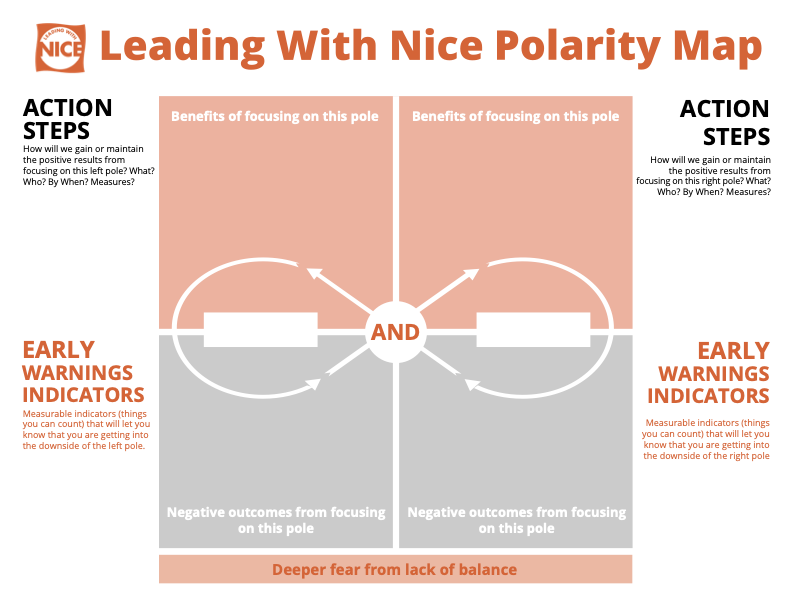When Old School Meets New School: Navigating the Wicked Problems
I had a conversation the other day with a friend of mine who had just been promoted to the position of principle in an elementary school (in my area, that means Kindergarten to grade 8). She had previously served as a vice-principle and before that a teacher in various elementary grades. Only a week in she was already bemoaning the lack of diverse experience her staff had at her school. Many of the teachers who had been in the profession for a decade or longer had always been at this same school.
The problem they had was they weren’t able to imagine solutions outside of what they had always experienced at the school. For example, at some point in the history of the school, a rule had been developed that kept students in grades 6 and above on one side of the yard and those in grades 5 and below on the other. No one could explain to her why this was but when she suggested they stop enforcing this rule, she was met with resistance.
Teachers who have years of experience bring a lot of good to the school as well. Typically their classroom management is excellent and their interactions with parents are done very well. They also have lots of great guidance for younger teachers on how to handle difficult situations.
On the other hand, my friend’s school has a handful of teachers who are newer to the profession and don’t have many years of experience. They have great new ideas on education, they’re proficient with the same technology students are using and because they’re newer, their salaries are smaller and leave more money in the budget for programming.
My friend finds herself with what authors Joseph Bentley and Michael Toth would call a “Wicked Problem,” in their book, Exploring Wicked Problems[1]. Bentley and Toth have a list of several attributes that make up a Wicked Problem, but suffice it to say they are problems that cannot be solved but only managed. For example, one of their rules states “Any proposed solution to a wicked problem cannot be true of correct given the circumstances, it can only bad, good or better.”[2] They suggest that seeking an answer that is “true” is a waste of time in relation to wicked problems.
Authors Roy Oswald and Barry Johnson wrote about wicked problems that exist specifically in churches in their book, Managing Polarities in Congregations[3]. Their lens sees these situations as ones that have people arguing over an either/or dilemma but truly the answer is often a bit of both.
Like polarities, wicked problems operate with two poles and the struggle is keep the loop that has communities traversing between them on as narrow of a path as possible. Recently, through my company, we provided a resource to help illustrate what a wicked problem/polarity map might look like [4].
Dealing with a mix of seasoned and fresh teachers, my friend is smack in the middle of what you’d call a classic “wicked problem.” It’s like trying to juggle tradition and innovation without dropping the ball on either. Joseph Bentley and Michael Toth tell us that with wicked problems, you’re not going to find a neat, tidy solution that ticks all the boxes. Instead, it’s about finding a balance that works well enough for now and knowing that you’ll have to adjust as you go along.
Roy Oswald and Barry Johnson have a similar take when they talk about the push and pull between different views in congregations, which isn’t too different from what’s happening in schools. My friend’s challenge is to get everyone on the same page—or at least reading from the same book, even if they’re on different chapters. It’s about recognizing that both the old guard and the new blood have something valuable to offer.
The trick is to get everyone talking and to figure out how to take the best bits from both sides. It’s not about choosing sides but finding a sweet spot where tradition can give us roots and innovation can give us wings. She’s going to need to keep an eye out for signs that things are tipping too far one way or the other and then steer things back to that middle ground.
In essence, she’s not just managing a school; she’s navigating a constantly shifting landscape. And that’s a pretty exciting place to be. By embracing this challenge, she’s not only going to make her school a better place for teachers and students alike but she’s also setting the stage for an environment where learning isn’t just about textbooks, but about preparing for the real world.
This kind of balance isn’t something you solve once and forget. It’s an ongoing process of give and take, of listening and adjusting. And that’s the beauty of it. It keeps things fresh, dynamic, and, most importantly, moving forward. So, here’s to the wicked problems and the polarities—they’re what keep us on our toes, after all.
[1] Joseph Bentley and Michael Toth, Exploring Wicked Problems: What They Are and Why They Are Important (Archway Publishing, 2020)
[2] page 31
[3] Roy M. Oswald and Barry Johnson, Managing Polarities in Congregations: Eight Keys for Thriving Faith Communities (Rowman & Littlefield Publishers, 2009)
[4] Leading With Nice Polarity Map

Leave a Reply
You must be logged in to post a comment.